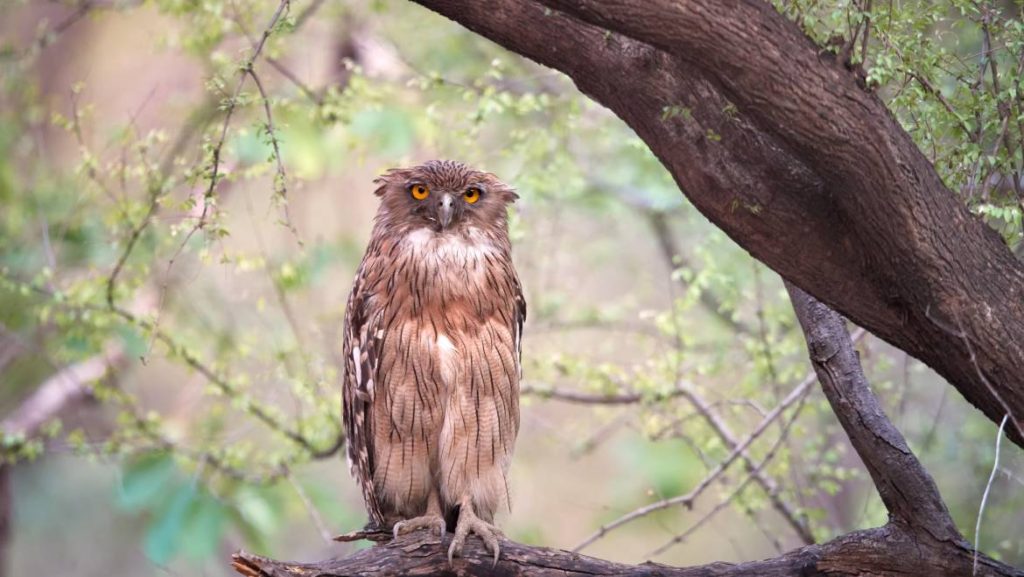One of the common activities with tourists from around the world is Tiger Sighting in India. There are wildlife reserves all over the world where wildlife lovers can see majestic and ferocious tigers throughout the year. One such national park to visit in India is the Ranthambore National Park with an area of 1334 sq. km which is popular for its Royal Bengal Tigers. Wildlife photography enthusiasts will certainly find the reserve to be a dream destination since it is far from the city, isolated, and surrounded by dust and stone. In India, there are many wildlife reserves, but Ranthambore’s exotic setting makes it stand out from the rest because the destination is even more fascinating with dry barren lands, gravel roads, historical forts, and a colorful atmosphere.
Moreover, this blog here can provide you with even more reasons to visit this tiger reserve in India.
1. Delightful Ranthambore Forest Safari- The Major highlight of the park is the wildlife safari where tourists get an opportunity to see and photograph the wilderness in an overland wild journey into the thick forest. There are two options available while entering Ranthambore National Park: A Canter safari in Ranthambore that has twenty seats or a Jeep that has six seats. Prices may differ depending on what you select. To watch the wild run free in their respective natural habitats, the tourists may get lost as they enter the animal kingdom. It is a whole different experience playing hide and seeks with the animals and your heart will definitely skip a beat when you spot one.

2. Devoted to the Wild- In contrast to most national parks in India, Ranthambore offers a unique ecosystem and a wealth of biodiversity. At Ranthambore, one has the benefit of not only watching the majestic tigers but many exotic animals which include leopards, Indian flying fox, jackal, rattles, mongoose, sloth bears, black buck, desert cats, and five-striped palm squirrels. The National Park also includes a large collection of reptiles and the list does not end here, pythons, the snub-nosed crocodile, desert monitor lizard, cobras, and the list goes on as the visit here to this national park will be an ongoing gala for wildlife lovers.

3. Fort Amidst Thick Woods- Also being cited as a Heritage site because of the picturesque ruins of the fort within the national park. Ranthambore national park has some authentic lakes and forts around the national park which are standing valiantly inside the wildlife reserve overlooking the whole park. Built about 700 feet high, the Ranthambore fort is situated about 5 km inside the park. The Ranthambore fort is well recognized as part of the UNESCO world heritage site under the title “Hill Forts of Rajasthan”.

4. Ideal Site for Bird Watching- Looking around and discovering some of India’s beguiling birds if you like some activities like walking and lifting your feet off the ground and looking in the grasslands. Perhaps, bird watching is only for the people with staying power. Tourists who love bird watching require a lot of patience and calmness which is crucial and tourists are suggested to carry a set of binoculars to set their eyes on the feathered creatures. It is an endless chase of trying to name rare and elegant bird species. The Bounded habitat comprises around 272 species so far along with various exotic species including the Flamingoes, Flycatchers, Grey Hornbills, Nightjars, and many more such species.

5. Ancient Banyan Tree and the Rich Vegetation- Vegetation plays a vital role while animals and birds are meandering in the wildwood. A Large variety of flora and fauna with over 300 species are present here to captivate the tourists accommodated in the dry grassland area. The Ranthambore National Park is popular for its ancient Banyan Tree with its large leathery leaves and foliage covering a vast area and providing a perfect shade. Also, the Ranthambore forest comprises a lot of complementing plants, vegetation, and unique reclusive flowers.
